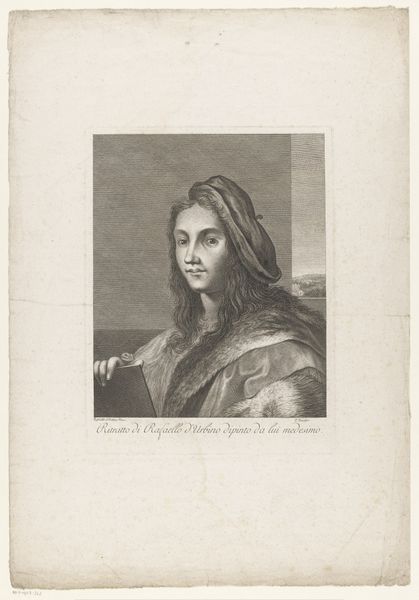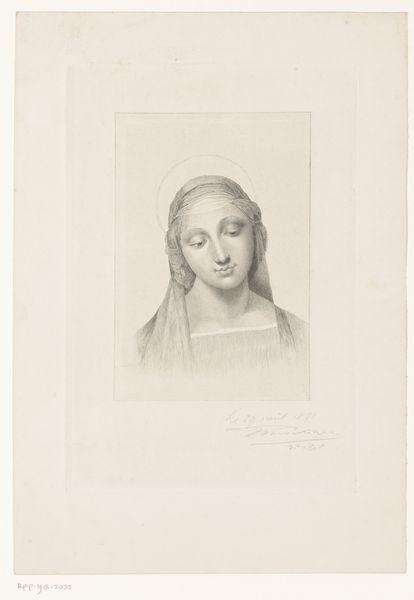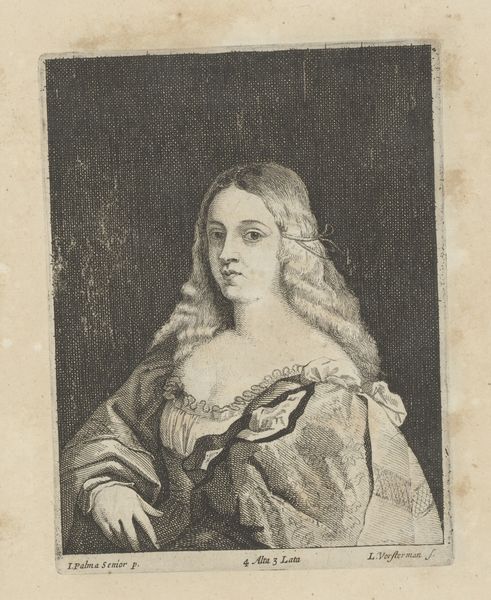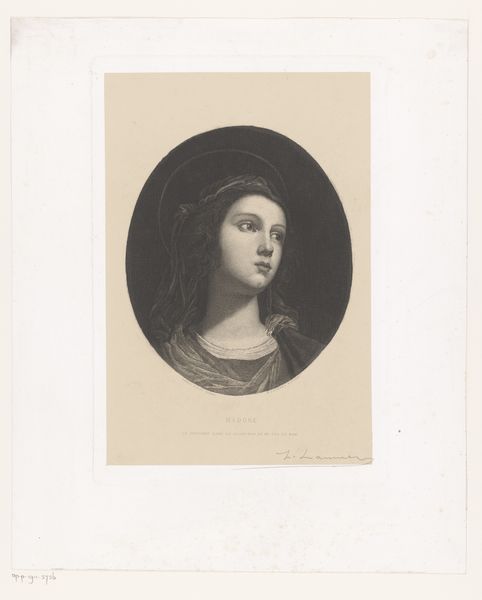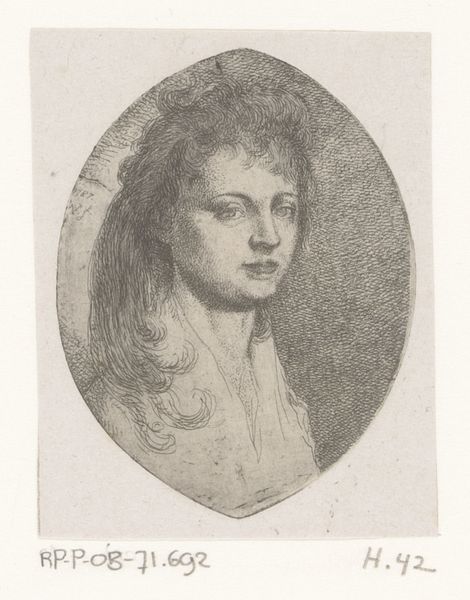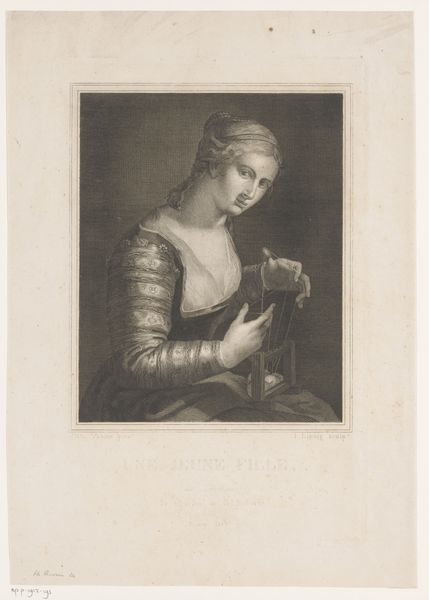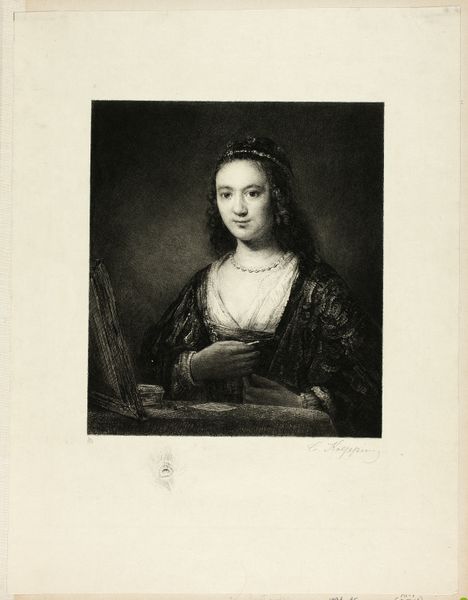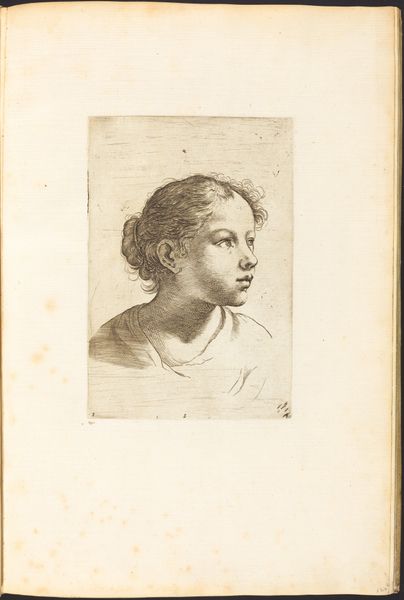
print, engraving
portrait
neoclacissism
historical photography
19th century
history-painting
engraving
Dimensions: height 315 mm, width 225 mm
Copyright: Rijks Museum: Open Domain
Karl Schröder created this portrait of Raphael, sometime between the late 18th and early 19th century, using engraving. This is an intaglio printmaking technique. The image is achieved by cutting lines into a metal plate, inking the plate so that the ink fills these recessed lines, and then transferring the ink to paper under high pressure, using a printing press. The character of this print is entirely dependent on the engraver’s mark. Look closely, and you can see that the image consists entirely of tiny hatched lines. The depth and spacing of these lines dictates the tonal range of the image. Schröder would have needed immense skill and an intimate understanding of the material properties of the metal, to render Raphael’s likeness. In an era before photography, engraving was a vital means of reproducing and circulating images. Consider the labour involved in producing such a print, and the social function it performed, bringing art to a wider audience. It encourages us to reflect on the traditional distinction between art and craft.
Comments
No comments
Be the first to comment and join the conversation on the ultimate creative platform.
